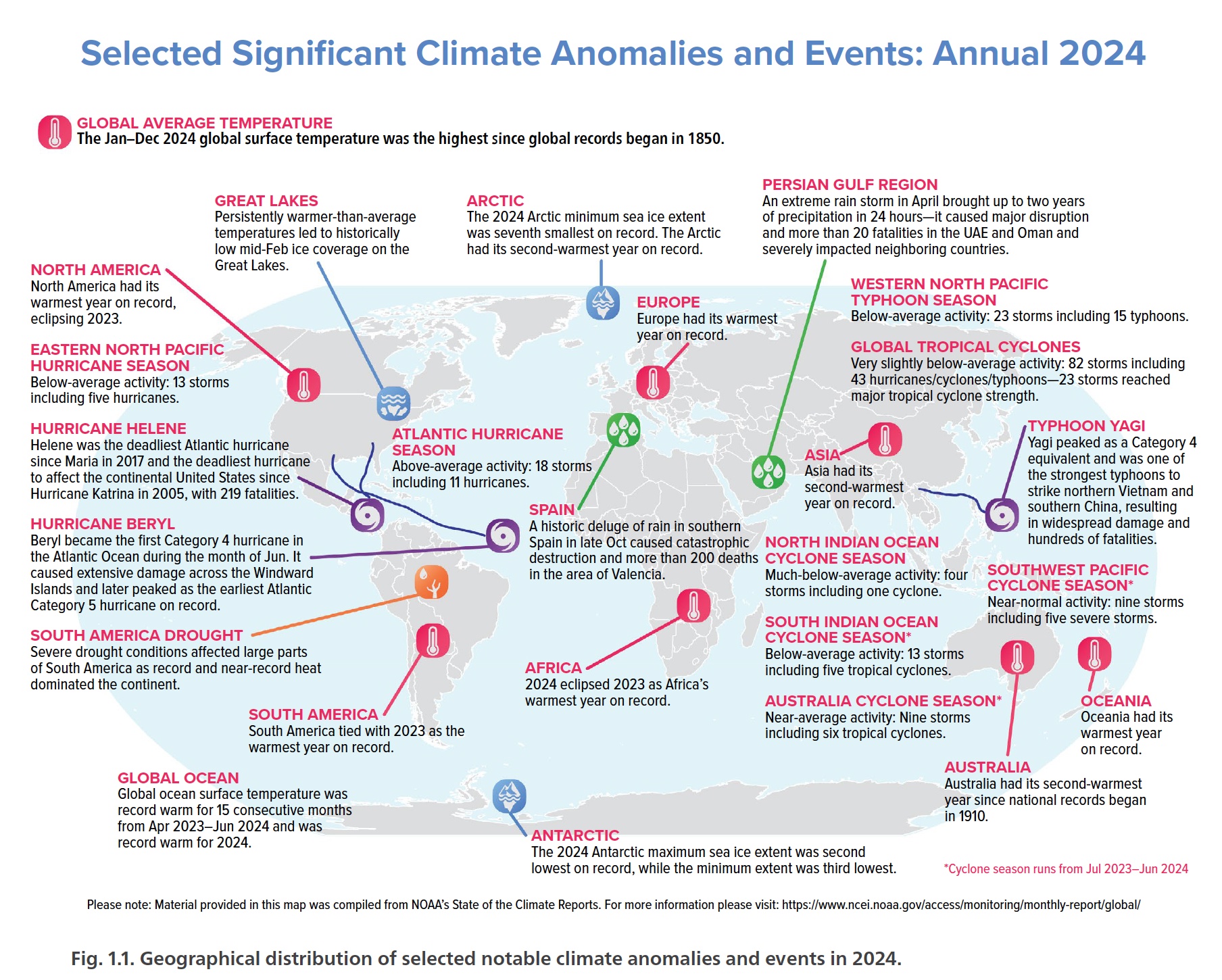In August, the 35th edition of the global climate report “State of the Climate” was published as a Special Supplement to the “Bulletin of the American Meteorological Society” (Q1, IF 5.9). The preparation of this international report involved 590 experts from 58 countries, including scientists from the Research Institute of Biology of Irkutsk State University.
Maxim Timofeev, Director of ISU Research Institute of Biology:
The year 2024 has become the warmest in the history of meteorological observations, surpassing the record set in 2023. The global average surface temperature over land and oceans increased by 0.10°C compared to the previous year. The global temperature was 1.29°C above the 20th century average and 1.46°C above the pre-industrial level.
Record temperatures were recorded in various countries and regions, including China, South Africa, Brazil, North America, the Caribbean, Africa, Oceania and Europe. An example of extreme events is an anomalous temperature of 47.0 °C recorded on October 7 and 8 in Villamontes, Bolivia.
In the Arctic, the annual average surface temperature was the second highest in 125 years of observations. The maximum Arctic sea ice surface in 2024 was among the lowest in the 46-year satellite data.
The world ocean continues to accumulate record amounts of heat. The heat content in the upper two kilometres of water remains at a historical maximum. The global sea level, which has been rising continuously for the past 13 years, exceeded the baseline by 105.8 millimetres, increasing by 4.6 ± 1.4 mm over the year.
2024 was a record year in glacier mass loss. All 58 reference glaciers recorded a negative mass balance – the second such occurrence in history after 2023. For instance, the once-large Conejeras Glacier in Colombia has completely disappeared, and Venezuela has officially announced the complete loss of its glaciers.
The following data is particularly important for lake researchers:
- Analysis of the surface temperature of 1944 lakes revealed a record anomaly of + 0.52°C relative to the 1995-2020 baseline period. A temperature increase was recorded in 79% of the lakes, while 21% showed a decrease. More than half (56%) of the lakes show a warming anomaly exceeding +0.5°C.
- The most significant positive anomalies were observed in lakes across Canada, China, Japan, the Tibetan Plateau, Eastern Europe and the Middle East. Temperature decreases were recorded in Patagonia, Greenland, Alaska and north-east of Russia.
- Lake Baikal remains relatively stable, but the scientists observe a trend towards expanding temperature variability range. While negative deviations from the global trend down to -4°C were recorded in 2021-2022, in 2023-2024 the surface water layer temperature went up to +4°C from the global trend.
The data on Lake Baikal were obtained as part of the unique long-term monitoring project “Point №1”, which has been conducted by ISU Research Institute of Biology since 1945. Since 2016, the monitoring has been supported by the “Lake Baikal” Foundation.
This project is the world’s longest-running ecological monitoring of the pelagic zone, which makes the obtained data particularly valuable. Since 2017, the project’s materials have been regularly used in compiling the global climate report.
Maxim Timofeev:
Overall, the published materials testify to unprecedented changes in the Earth’s climate system, requiring close attention and targeted measures to adapt to the new climatic conditions. What these measures will be is a question for politicians and economists. The task for the scientists is to document the changes and warn about the consequences.
The report is available at the following link: State of the Climate in 2024. Bull. Amer. Meteor. Soc., 106 (8), S29–S31
















